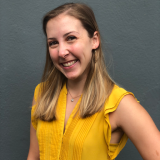
Dr. Vineet Arora wants you to see the Electronic Health Records as an ally in improving care.
That’s because her job is to improve healthcare at the University of Chicago (as well as hospitals in general) in terms of quality, patient safety, and value.
How this impacts EHRs? Dr. Arora says she knows people are concerned with the amount of time that residents and physicians spend with electronic health records.
“It’s a thorn in the side of patients and physicians alike,” Dr. Arora says. So she asked the question, “Can we optimize so it is nudging you to make better decisions about quality, safety and value?”
One way to optimize is to look at ways to fix a problem Arora said is colloquially called “immaculate catheterization” — a patient has a catheter, but no one knows how it got there, or how long it’s been there, and sometimes the physician doesn’t even know the patient has one. This is a problem, Dr. Arora says, because the risk for infection with a catheter increases with every subsequent day it’s there.
Dr. Arora likes these kinds of issues to be reported, and especially likes when residents report them. This is because, she says, when she was a resident, errors were kept quiet.
“If you were a resident and someone made a mistake, you might not tell anyone,” Dr. Arora remembers. “At the most you would tell your chief resident. It was not often that you would file event reports.”
Now, she says, things are different. Residents are more likely to report an error they see, though nurses are still the most common reporters.
“When you think something went wrong, you actually use the reporting process so the institution can learn from all the reports that come in,” Dr. Arora says. These reports can either be on errors that were caught before they were made, or on errors that found their way to the patient but the patient was resilient and unaffected.
She has a personal reason for being so determined to improve the system and minimize errors.
“Any time an error is made, that will impact you. I was involved with a medical error and it made me think about the system, and how the system needed a lot of improvements from where I stood as a resident to deliver safe care,” Dr. Arora says. “That’s why I’m so passionate about it, because it was such a disconnect between my personal training and experience and what I saw in terms of a gap.”
But the optimization of EHRs and reporting mistakes is only part of the big goal Dr. Arora is pursuing: changing the environments that residents train in.
Dr. Arora wants to see a change in the curriculum.
“When people hear ‘curriculum’, they usually think of powerpoint lectures. But those are not the most impactful thing. There are very few times where you’re like, ‘I was completely transformed by this powerpoint lecture!’” Dr. Arora jokes.
But she means business when it comes to passive vs active learning activities, especially changing the “clinical learning environment”.
“Medical training is service learning. Experience is learned on the job with workplace training and learning from patients you see,” Dr. Arora explains. “You’re learning from the environment that you care for those patients in. What you’re taught is not as important in imprinting as the environment that you train in.”
What it comes down to is that residents end up practicing how they trained, according to studies that show that the environment where you train has a large impact.
“If you train in a high value care environment,” Dr. Arora says as example, “you’re more likely to practice in a high value care environment. That is what motivated folks to be like, ‘We can’t just release trainees into the wild and see what comes out at the end.’”
Instead, Dr. Arora says the push to improve a clinical learning environment is about preparing residents for a life in medicine.
“[The goal is] to take the environment the residents are training in and to use it as an advantage so they are able to achieve the highest level of function for safe and reliable and high quality care,” Dr. Arora says. “You can use lectures, but you’re also thinking, ‘How can I use the learning environment wisely, such as embed in the learning environment and embed nudges in the learning environment nudges, or use guerrilla tactics to teach the residents about quality or safety or value?”







